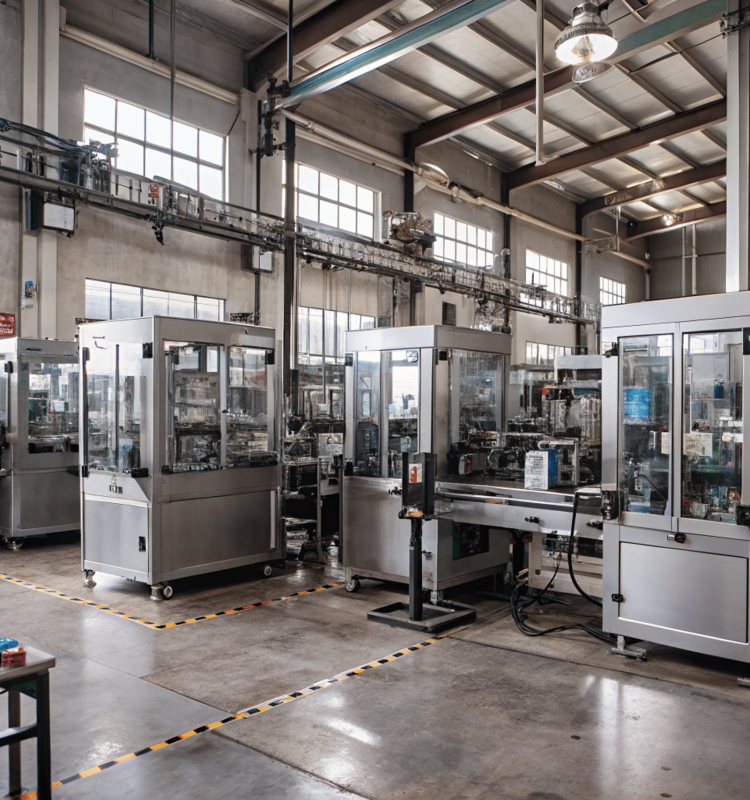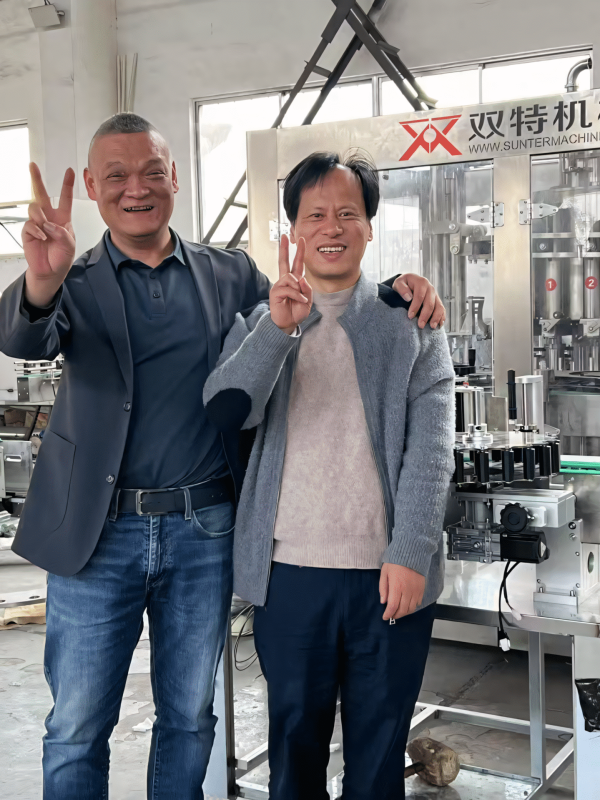Pumping thick soaps and gels is tough. Wrong pumps cause waste and downtime. Selecting the right pump technology is the simple, powerful solution you need.
To select the right pump, match it to your liquid's properties. Consider viscosity, shear sensitivity, and dosing accuracy. Peristaltic pumps are great for shear-sensitive gels, while piston pumps handle high viscosity well. Positive displacement pumps generally ensure precise filling.
I remember a few years ago when a toiletries company contacted me. They were producing a high-viscosity body wash that contained natural abrasive particles. Their previous filling equipment was constantly failing. They either had unstable flow, which meant inconsistent amounts in each bottle, or particle blockages, which caused production to stop completely. They had tried different pumps, but nothing worked.
Their old pump created too much shear force. This damaged the body wash's texture and also caused the pump to wear out. I helped them design a new system using a peristaltic pump. The peristaltic pump's gentle action gave them a stable flow rate.
It also avoided shearing the body wash and stopped the particle blockages. The customer told me that their product quality and production efficiency improved a lot after the change. This experience taught me just how critical the right pump is.
Gear, Screw, or Peristaltic: Which Pump[^1] Type is Best for Shear-Sensitive Gels?
Pumping shear-sensitive gels can easily ruin their texture. This damages product quality, leading to unhappy customers and waste. Understanding pump shear forces helps you pick the right one.
Peristaltic pumps are generally best for shear-sensitive gels because their gentle action creates low shear forces. Gear pumps generate high shear and are unsuitable. Screw pumps are a middle ground but require careful evaluation to avoid damaging the gel's structure.
When we talk about "shear-sensitive" gels, we mean that their structure can be broken down by force or friction. Think of it like over-whipping cream; it changes texture and can't be fixed. The same thing can happen to a cosmetic gel or a food product inside the wrong pump. The goal is to move the product gently.
Comparing Pump Shear Levels
Different pumps move liquid in very different ways, which creates different levels of shear.
- Gear Pumps: These pumps use two meshing gears to move liquid. As the teeth mesh, they squeeze the gel through a tight space. This action creates very high shear forces, which can easily damage delicate product structures. They are powerful but not gentle.
- Screw Pumps: A screw pump moves the gel progressively along a shaft. The shear is much lower than in a gear pump, but there is still friction between the gel and the pump's internal surfaces. For very sensitive products, this can still be a problem.
- Peristaltic Pumps: These are often the best choice. They work by using rollers to squeeze a flexible tube, pushing the gel forward. The gel never touches the pump's moving parts, only the inside of the tube. This action is very gentle and creates the lowest shear.
Here is a simple table to break it down:
| Pump Type | Shear Level | Best For |
|---|---|---|
| Gear Pump | High | Non-sensitive, high-viscosity liquids |
| Screw Pump | Medium | Moderately sensitive, viscous liquids |
| Peristaltic Pump | Low | Highly shear-sensitive, sterile products |
For anyone working with delicate gels, I almost always recommend starting with a peristaltic pump. It protects the product's quality, which is the most important thing.
How to Select a Pump for Viscous Liquids Like Soaps and Gels?
Choosing a pump for thick liquids feels overwhelming. A wrong choice leads to clogged lines, slow production, and costly repairs. A simple checklist of key factors can guide your decision.
Focus on key factors: viscosity, required flow rate, pressure, and chemical compatibility. For viscous liquids, positive displacement pumps like piston or gear pumps are common choices. Also, consider maintenance needs and your budget to find the best fit for your production line.
Selecting the right pump isn't just about picking one that can move thick liquid. It's about finding the perfect match for your specific product and production goals. Over the years, I've developed a mental checklist to work through with my clients. It ensures we don't miss anything important.
Key Selection Factors Checklist
Breaking the decision down into smaller parts makes it much easier. You need to think about the liquid itself, your production needs, and long-term operational costs.
- Viscosity: This is the most important factor. Viscosity is a measure of how thick a liquid is. Water has a low viscosity, while honey has a high viscosity. A pump for soap needs enough power to move a thick substance without struggling.
- Flow Rate and Pressure: You need to know how much product you need to move per hour (flow rate) and how much force is needed to push it through your pipes (pressure). These numbers directly impact the size and power of the pump you need.
- Shear Sensitivity: As we discussed, if your product's texture can be damaged, you need a low-shear pump like a peristaltic one.
- Chemical Compatibility: The pump materials must not react with your soap or gel. For most applications, stainless steel is a safe choice because it is durable and easy to clean .
- Maintenance and Cost: Think about the total cost. Some pumps, like piston pumps, might have a higher initial price but offer great accuracy. Others might be cheaper to buy but require more maintenance over time. Always consider long-term reliability.
Here’s how these factors apply to common pump types:
| Factor | Piston Pump | Peristaltic Pump | Gear Pump |
|---|---|---|---|
| Viscosity Handling | Excellent for very thick liquids | Good, but can have limits | Very good for thick oils |
| Shear Level | Low to Medium | Very Low | High |
| Maintenance | Requires regular seal checks | Simple tube replacement | Can be complex |
| Best Application | Accurate filling of pastes, creams | Sterile, shear-sensitive products | Transferring non-sensitive liquids |
Considering these points methodically will lead you to the right choice, saving you time and money.
Accurate Dosing is Key: Are Progressive Cavity Pumps the Ideal Choice for Precision Filling of High-Viscosity Soaps?
Inconsistent filling amounts can ruin your brand's reputation. This means wasted product, unhappy customers, and potential regulatory issues. A precision pump ensures every bottle is filled perfectly.
Progressive cavity pumps (PCPs) are an excellent choice for accurate dosing of high-viscosity soaps due to their positive displacement nature. They offer stable, pulse-free flow. However, consider their higher cost and sensitivity to solids. Other options include piston pumps.
When you sell a product by volume, accuracy is everything. Customers expect the bottle to be full, and regulations demand it. For high-viscosity soaps, achieving this precision can be tricky. Progressive Cavity Pumps (PCPs) are often considered for these jobs, and for good reason. They are a type of positive displacement pump, which means they move a precise, fixed amount of liquid with each revolution. This design makes them naturally accurate.
PCPs vs. Other Precision Pumps
A PCP works by using a helical rotor that turns inside a flexible stator. This creates a series of sealed cavities that move the soap from the inlet to the outlet. The flow is very smooth and does not pulse, which is great for filling. But are they always the best option?
Let's compare them to another high-accuracy pump, the piston pump.
- Piston Pumps: These are the gold standard for accuracy with thick liquids. They use a piston moving back and forth in a cylinder to dispense an exact volume. They can handle extremely high viscosities and even products with soft chunks, like fruit preserves.
Here's a direct comparison to help you decide:
| Feature | Progressive Cavity Pump (PCP) | Piston Pump |
|---|---|---|
| Accuracy | Very High, consistent flow | Extremely High, very precise volume |
| Viscosity Handling | Excellent | Excellent, can handle thicker pastes |
| Flow Type | Smooth, non-pulsating | Pulsating (can be smoothed with dampeners) |
| Sensitivity to Abrasives | High (stator can wear quickly) | Medium (seals and cylinders can wear) |
| Initial Cost | High | High |
| Cleaning & Maintenance | Can be complex to disassemble | Requires regular maintenance, easier to clean |
While PCPs are fantastic for their smooth flow and accuracy, their main drawback is their intolerance for abrasive particles, which can quickly wear out the expensive stator. If your high-viscosity soap contains exfoliants, a robust piston pump might be a more durable and reliable long-term solution. The final choice depends on the specific nature of your product and your budget.
Conclusion
Choosing the right pump for viscous liquids is about matching technology to your product's specific needs. Consider viscosity, shear, and accuracy to ensure quality and efficiency in your production.
[^1]: Learn more about pump.


